During Lab Week we asked a few employees working at Vanderbilt Medical Laboratories’ new 110,000-square-foot diagnostic core laboratory their thoughts about their workspace.
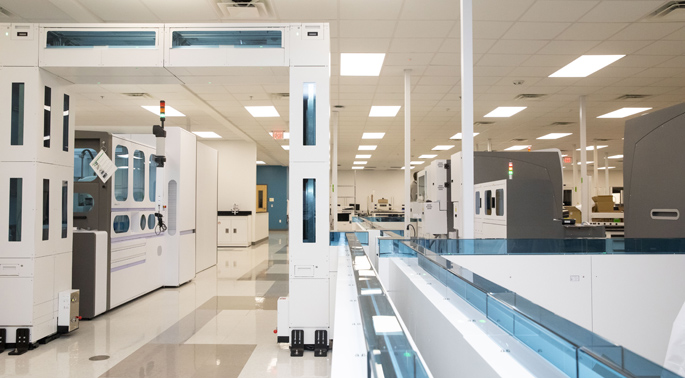
The laboratory at MetroCenter is designed in an open concept layout, organized by workflows, with lab specialties clustered throughout the open space. New equipment now automates routine laboratory tasks such as specimen preparation and performance of basic assays, allowing personnel to focus on more complex activities. Automation also increases testing capacity and accuracy.
VUMC’s hospitals, outpatient clinics, regional hospitals, and extramural practice customers are supported by the new facility.
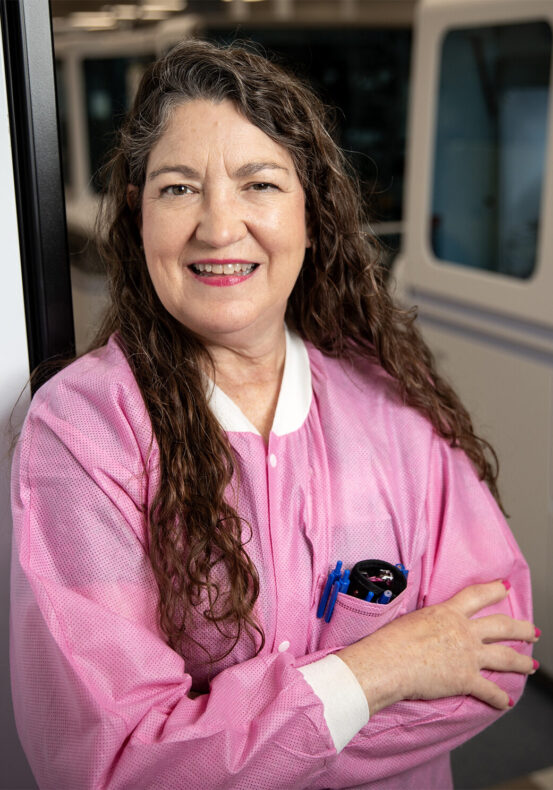
Sharon Glover, Medical Laboratory Scientist (MLS) 4, Molecular Infectious Disease, first shift
We’ve added instrumentation that will help us expand testing capabilities. Our group has picked up some tests formerly done by Microbiology, so I’m going back and remembering things I learned 38-39 years ago. Some of it has been easy; some of it hasn’t. Many bacteria names have changed as new knowledge has led to them being reclassified.
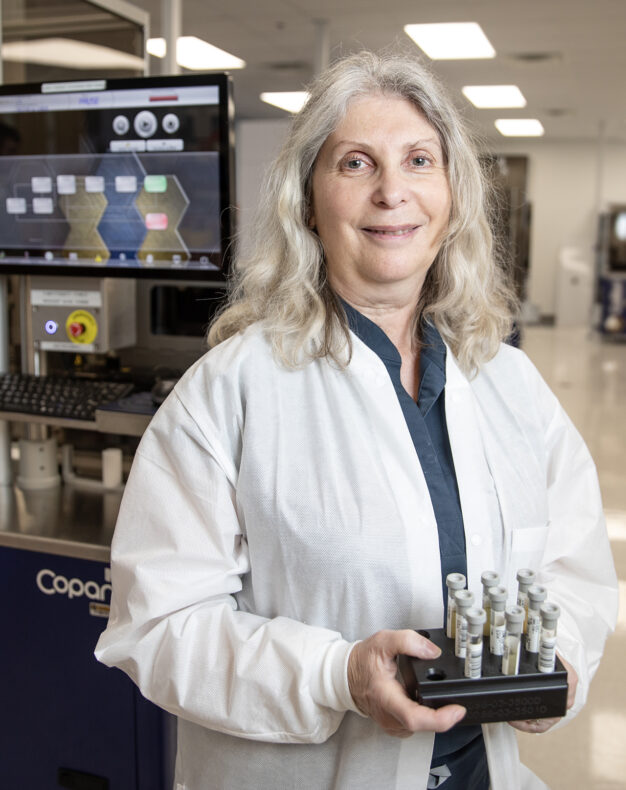
Carla Nicholson, MLS4, Microbiology, first shift
I’m happy to be out of the congestion of the main campus. It’s wonderful to have a parking garage right here. Also, we’ve got so much more space in the lab, and it’s very aesthetically pleasing. We’ve also got the wonderful greenway right here along the Cumberland River so we can go walking.
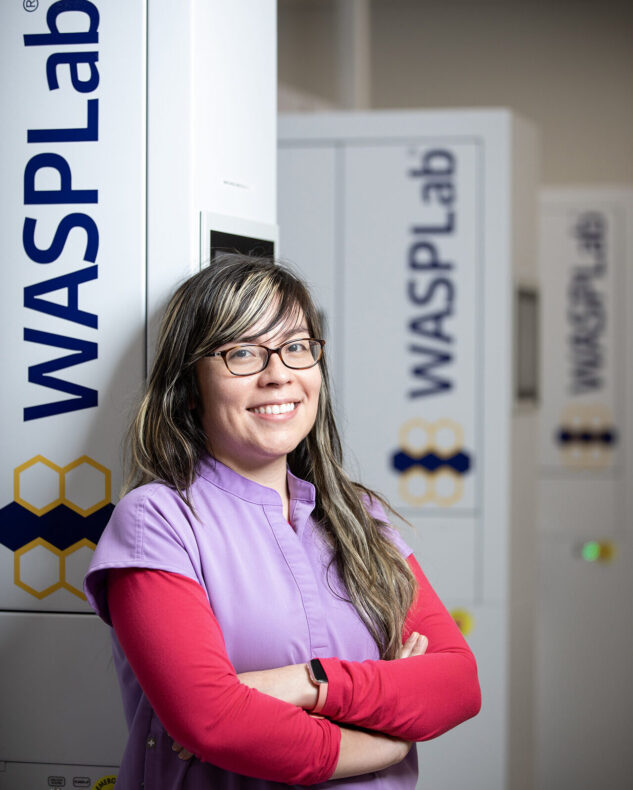
Doris Ortez, MLS4, Microbiology, first shift
We have so much more space, so that means we’re able to add new technologies to bring our lab into the modern era. We’re still doing ‘old school’ plate reading in Microbiology today, but with the coming addition of a WASP (Walk Away Specimen Processor), that will all be computer-based and automated in an enclosed system.
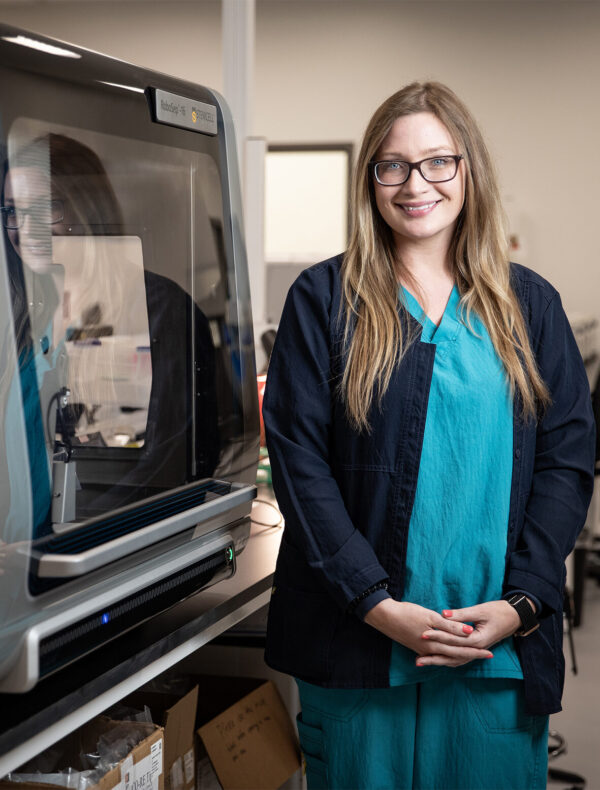
Ashton Arnold, MLS2, Molecular DNA Genetics, day shift
This has more than quadrupled our space, which makes it easier to work. I think it’s great that we have so much more storage space. We have a better workflow here, and even though volumes have increased in certain parts of our lab, it hasn’t felt like it because our processes are more efficient, and we have more room to do what we need to do.
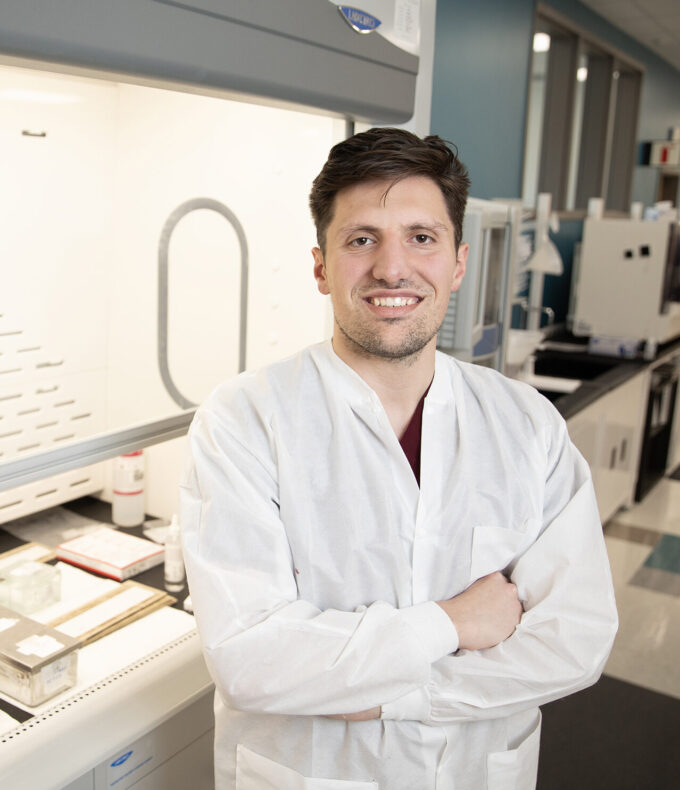
Mikail Osmani, Cytotechnician II, Cytopathology, day shift
I love being in this new area. It allows more opportunities for me to share my thoughts and input that might improve how we operate. I can put my voice out there and be heard. Also, I love all the windows and being able to see outside. I go on walks along the river. It’s just a beautiful thing.
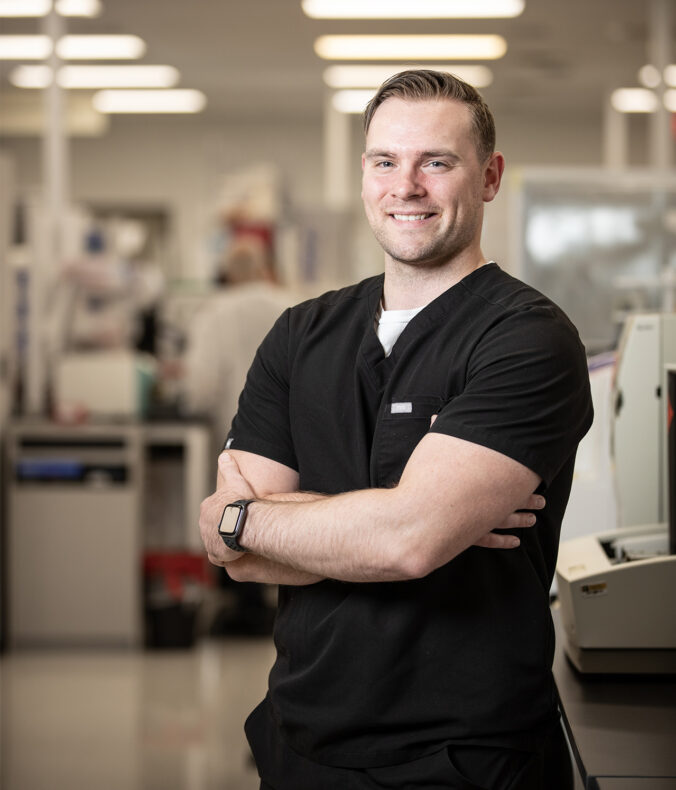
Bryan Petoskey, MLS2, Special Chemistry, first shift
It’s always nice when you have an environment that is designed from the start to be a laboratory, and everyone is strategically placed in the building. I think it’s really going to help that we’re already organized so we can get the results out in a timely manner for our patients.
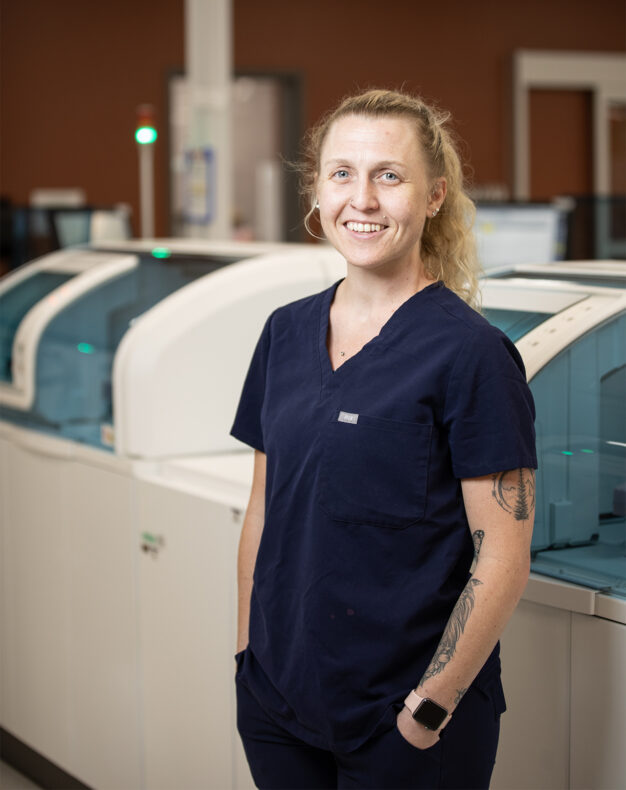
Kelsey Mitchell, MLS3, Core Lab Chemistry, day shift
I love the open floor plan and being able to mingle with all the different lab areas. I like that we’re collected and not all over the place in different buildings and on different floors. It’s much easier to meet new people. And we’re finally headed into being that truly innovative lab, which we’ve been wanting to do for so long.
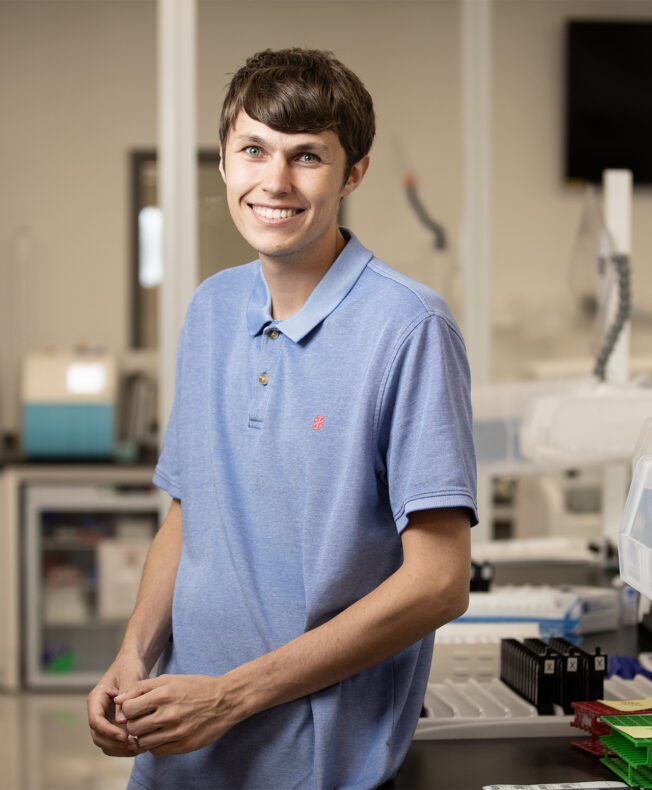
Nathan Borden, MLS2, Immunoserology, second shift
Our workflow here is more efficient. We used to do a lot of batch testing, and now we continuously load and run the instruments nonstop. In the old space, it’d take an hour or two in the morning to set up a run, and then you’d just be waiting for it to be done. Now, we have a steady workflow throughout the day.
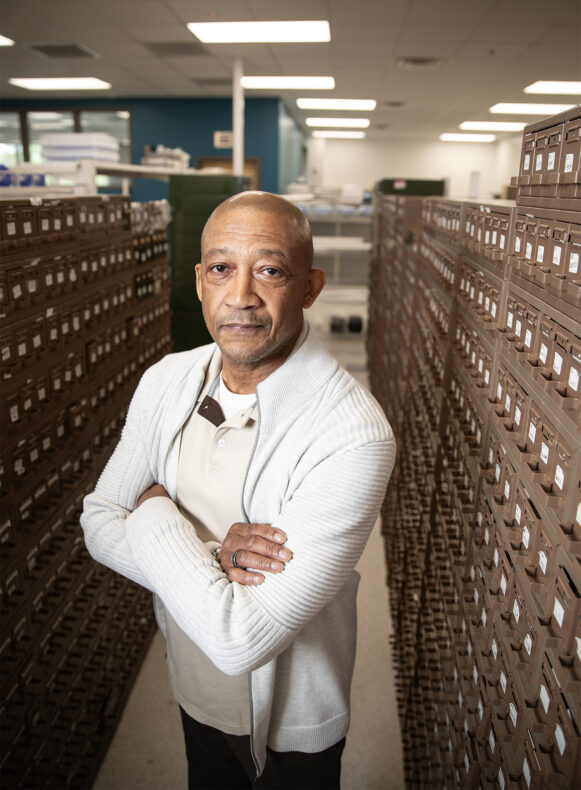
Robert Bryant, Lab Associate II, Pathology Support
My job consists of making sure all the slides and blocks are in order in our archive so physicians can get them when they need them. I also send out hemocology-pathology slides to hospitals that have sent slides to us requesting our expertise. We’re a bit more organized here. And it’s easier to get to people because here we’re all together.
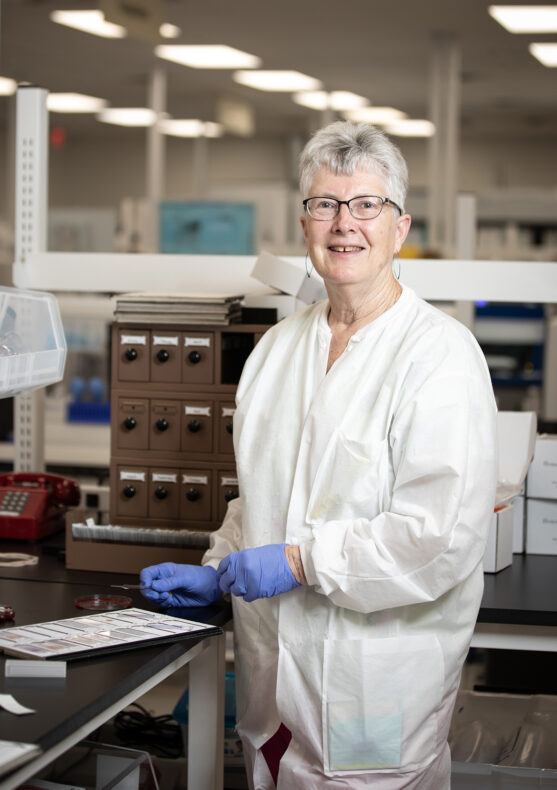
Virginia “Ginny” Climo, MLS4, Hematopathology, day shift
We have new, integrated analyzers in hematology, chemistry and along the whole line. And this area, Histocompatibility and Immunogenetics, is new. It’s a bank where all the genetic testing will be stored. This is all new, top-of-the line technology, and it think it will give patients a better answer to what’s wrong with them.
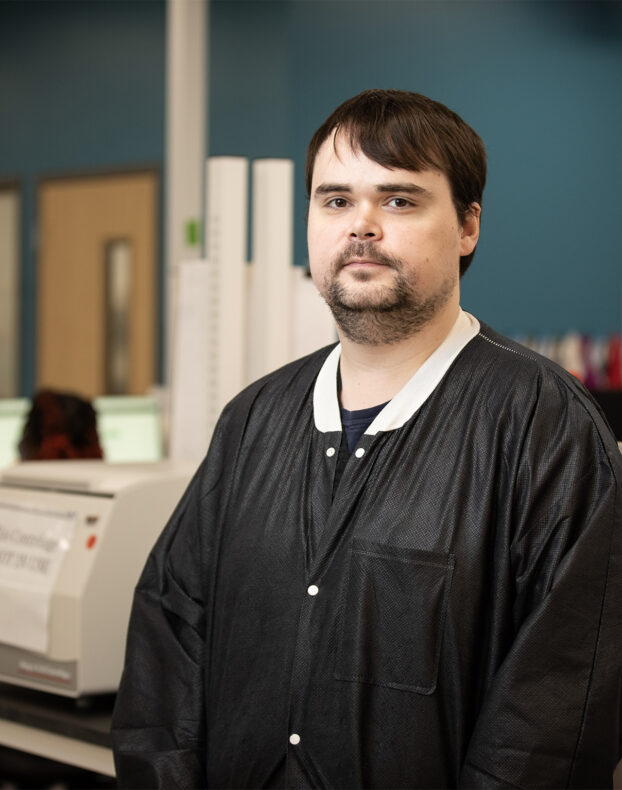
David Page, MLS, Reference Lab, second shift
I work in the reference lab area, which is where we send out the tests that we don’t yet perform here. The whole point of this new lab is to expand our volume and test menu. So, every test that we can do here is one less test my department has to send out. That should provide faster results to our patients.













